

You want to reduce the carbon footprint of your food? Focus on what you eat, not whether your food is local. Reducing My Footprint. Digital Carbon Footprint — What can we do ? - Guillaume Jacquart - Medium. Disclaimer: I am by no means an expert in the field of energy production, green IT or related subject.
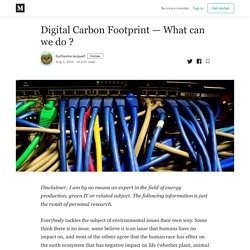
The following information is just the result of personal research. Everybody tackles the subject of environmental issues their own way. Some think there is no issue, some believe it is an issue that humans have no impact on, and most of the others agree that the human race has effect on the earth ecosystem that has negative impact on life (whether plant, animal or human based). Although I’ve always been on the latter side of the spectrum, the problem was always kind of distant to my life for 3 main reasons that I think are shared by many: I believed the biggest problems would have technical solutions that experts would come up with and save the dayI thought these issues should be handled by the governments or large and influential associationsI also had the belief that I could not have real impact at my scale. Snopes.
This article by Mark Maslin is republished here with permission from The Conversation.
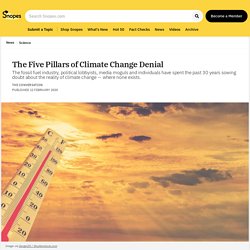
This content is shared here because the topic may interest Snopes readers; it does not, however, represent the work of Snopes fact-checkers or editors. The fossil fuel industry, political lobbyists, media moguls and individuals have spent the past 30 years sowing doubt about the reality of climate change – where none exists. The latest estimate is that the world’s five largest publicly-owned oil and gas companies spend about US$200 million a year on lobbying to control, delay or block binding climate policy.
Their hold on the public seems to be waning. Two recent polls suggested over 75% of Americans think humans are causing climate change. ICAO Carbon Emissions Calculator. CO2 Emissions per passenger take into consideration the load factor and are based only on passenger operations (i.e. fuel burn associated with belly freight is not considered).
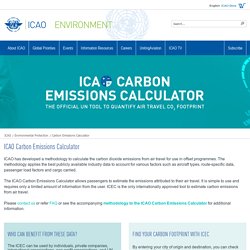
The steps for the estimation of CO2 emissions per passenger: Step 1: Estimation of the aircraft fuel burn Step 2: Calculation of the passengers' fuel burn based on a passenger/freight factor which is derived from RTK data Step 3: Calculation of seats occupied (assumption: all aircraft are entirely configured with economic seats). Seat occupied = Total seats * Load Factor Step 4: CO2 emissions per passenger = (Passengers' fuel burn * 3.16) / Seat occupied Note: for flights above 3000 km, CO2 emissions per passenger in premium cabin = 2 x CO2 emissions per passenger in economy.
SAP BrandVoice: Three Industries Where Technology Is Reducing Our Carbon Footprint. The science is in.
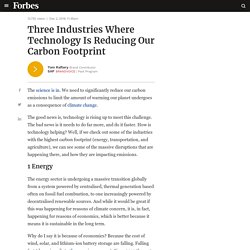
We need to significantly reduce our carbon emissions to limit the amount of warming our planet undergoes as a consequence of climate change. The good news is, technology is rising up to meet this challenge. The bad news is it needs to do far more, and do it faster. How is technology helping? Well, if we check out some of the industries with the highest carbon footprint (energy, transportation, and agriculture), we can see some of the massive disruptions that are happening there, and how they are impacting emissions. 1 Energy The energy sector is undergoing a massive transition globally from a system powered by centralised, thermal generation based often on fossil fuel combustion, to one increasingly powered by decentralised renewable sources. Why do I say it is because of economics? Don't take my word for it. “We see renewables plus battery storage without incentives being cheaper than natural gas, and cheaper than existing coal and existing nuclear... 2 Transportation.
All ecolabels in Canada. Footprintcalculator. How-to-track-your-carbon-footprint-1. Hello, Earthlings!
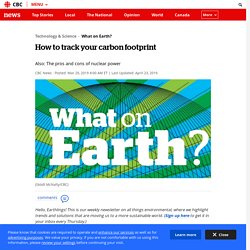
This is our weekly newsletter on all things environmental, where we highlight trends and solutions that are moving us to a more sustainable world. (Sign up here to get it in your inbox every Thursday.) This week: You want to reduce your carbon footprint. How do you know what works? District of Saanich. Climate change food calculator: What's your diet's carbon footprint? 52 Climate Actions. Climate Justice in BC: Lessons for Transformation. The Climate Justice Project (CJP) asks how we can tackle global warming with fairness and equity.

Our challenge is to build a zero-carbon society that also enhances our quality of life. This module explores the concept of climate justice, linking global climate change to local actions, and looking at who benefits and who pays the costs from burning fossil fuels. This section also asks students to reflect on their feelings about climate change, which may be dismissive, despairing, angry or hopeful.
Climate change is a heavy topic – being able to discuss emotional responses openly and honestly is important. The following CJP publications provide background and deeper context for this module. Students will review what climate change is, and then develop an understanding of the concept of climate justice.Students will consider who benefits from using fossil fuels and who pays the costs of climate change.Students will consider what climate justice means in the BC context.
Additional Resources.